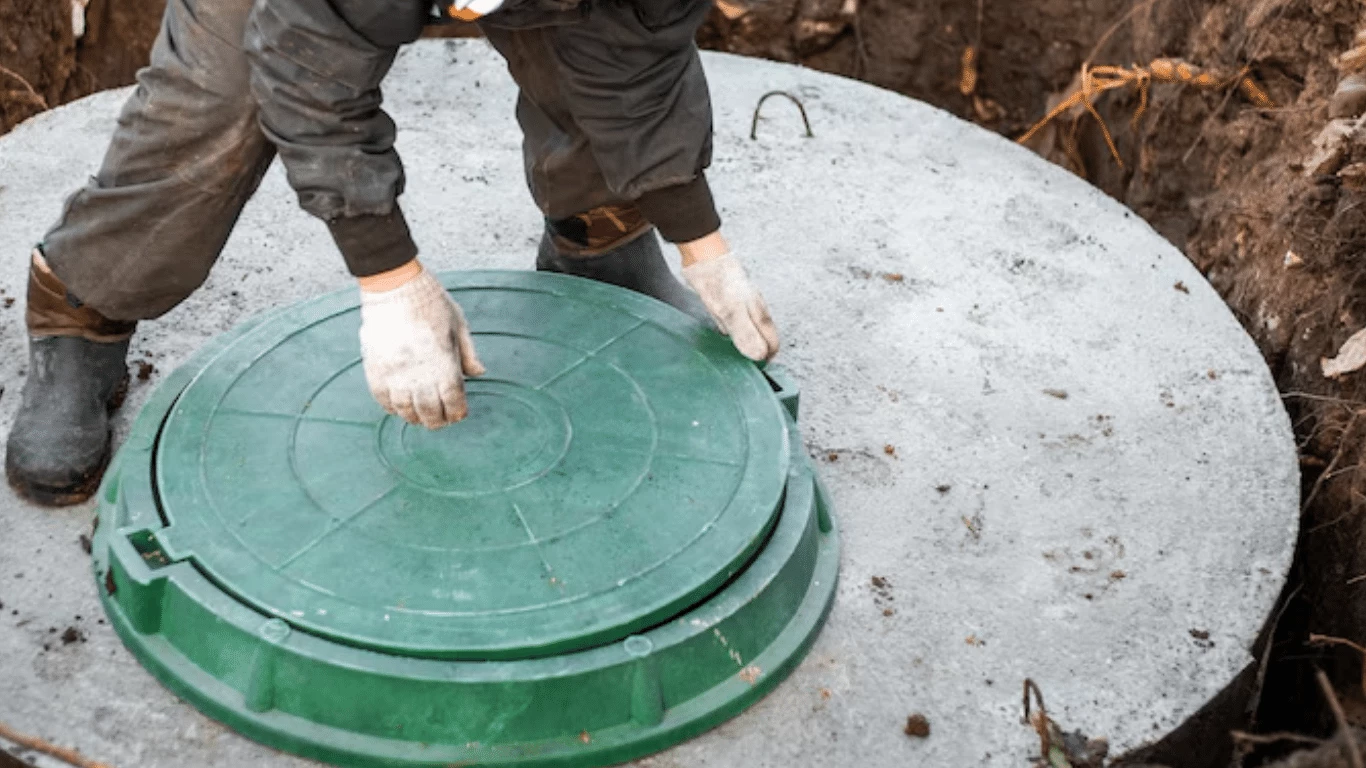When pollen season hits, it’s not just your nose that suffers—it’s your uncovered well too. Spring’s surge of pollen and debris can quickly find its way into your well, turning what should be a safe water source into a potential problem.
An uncovered well is a prime target for all sorts of contaminants, and pollen is no exception. It can clog filters, affect water quality, and lead to headaches down the road. If you’ve been ignoring your well’s cover, now’s the time to rethink that strategy.
How does pollen season affect the quality of well water?
Pollen season can significantly impact well water quality, especially when wells are uncovered or poorly sealed. Here’s how pollen affects well water quality:
- Contamination from Pollen: During pollen season, tree, plant, and flower pollen is released into the air, where it can land on the surface of open wells. This contamination affects the clarity and taste of the water, making it unpleasant or unsafe to drink.
- Increased Microbial Growth: Pollen, being organic matter, provides a food source for bacteria and algae. When pollen accumulates on the surface of well water, it creates an environment conducive to microbial growth, which can degrade the water’s quality and potentially introduce harmful pathogens.
- Bacterial and Algal Bloom: The combination of pollen and warm spring temperatures encourages the growth of harmful bacteria and algae in uncovered wells. These organisms can thrive in the organic material, leading to cloudy water, unpleasant odors, and an increased risk of waterborne illnesses.
- Risk of Allergens: Pollen in well water can exacerbate allergic reactions for individuals sensitive to certain pollen types. Consuming or coming into contact with this water can lead to allergic reactions such as skin rashes, eye irritation, or respiratory issues.
- Rainwater Contamination: During spring rains, pollen can mix with rainwater, causing it to wash into wells and further contributing to contamination. This runoff can carry additional pollutants, which lowers the water quality.
Pollen season can significantly degrade well water quality by introducing organic matter, increasing microbial growth, and exacerbating allergy symptoms. Proper well maintenance, including covering wells during pollen season, is essential to maintaining clean, safe water.
Can airborne allergens contaminate uncovered water wells?
Yes, airborne allergens like pollen can contaminate uncovered water wells. When pollen is released into the air during peak pollen season, it can settle on the surface of open or uncovered wells. This pollen can mix with rainwater or other environmental debris, contaminating the water supply. Here’s how airborne allergens affect well water:
- Pollen Accumulation: Pollen is lightweight and easily travels through the air. It can land on the surface of open wells. This accumulation can reduce the clarity and taste of the water, making it less appealing or safe for consumption.
- Microbial Growth: Pollen provides an organic food source for bacteria and algae. When combined with the moisture in a well, it creates an environment that promotes the growth of these microorganisms, which can lead to water supply contamination. This can result in cloudy water, unpleasant smells, or harm to health.
- Potential Health Risks: Pollen and other allergens in the well water can exacerbate allergic reactions in sensitive individuals, causing skin rashes, respiratory issues, or eye irritation. If harmful bacteria grow in the well, the risk of waterborne illnesses can also increase.
Properly covering and sealing water wells, especially during high pollen seasons, is important to prevent contamination and ensure the water remains clean and safe for use.
What are the risks of leaving a well uncovered during spring?
Leaving a well uncovered during spring presents several risks that can compromise water quality and pose health hazards. Here’s an overview of the risks:
- Pollen Contamination: During spring, pollen from trees, plants, and flowers is abundant. When a well is uncovered, pollen can settle on the surface, mixing with rainwater and debris. This contamination can affect the water’s taste, appearance, and safety.
- Microbial Growth: An uncovered well is more susceptible to contamination from microorganisms such as bacteria, algae, and fungi. Combining organic material from pollen, debris, and moisture creates a breeding ground for these microorganisms. This can lead to cloudy water, unpleasant odors, and potential health risks from waterborne pathogens.
- Debris and Animal Intrusion: Without a cover, wells are more prone to collecting debris like leaves, dirt, and twigs and attracting animals such as rodents or insects. These materials can introduce harmful particles into the water, leading to further contamination.
- Rainwater Runoff: Spring rains can wash contaminants from the surrounding environment into the well. An uncovered well may collect runoff containing pesticides, fertilizers, or other pollutants from nearby areas, compromising water quality.
- Health Risks: The combination of contaminants from pollen, debris, and microorganisms can pose health risks, including gastrointestinal issues, skin irritation, or more serious waterborne diseases. The water may also become unsafe for drinking, cooking, or bathing.
Leaving a well uncovered during spring exposes it to contamination from pollen, debris, and microorganisms, creating potential health hazards. Properly covering the well can help prevent these risks and ensure clean, safe water.
Why do uncovered wells become more vulnerable in pollen-heavy months?
Uncovered wells become more vulnerable during pollen-heavy months due to the influx of pollen particles, moisture, and organic material, creating an environment conducive to contamination and microbial growth. Here’s why uncovered wells are particularly at risk:
- Pollen Accumulation: During pollen-heavy months, trees, plants, and flowers release large amounts of pollen into the air. Uncovered wells provide an open surface where this pollen can land, leading to contamination. The pollen can mix with rainwater, dirt, and other debris, lowering water quality and affecting its taste, appearance, and safety.
- Increased Microbial Growth: Pollen is an organic material that feeds bacteria, algae, and fungi. When combined with moisture from rain or humidity, it encourages the growth of microorganisms in the well. This can lead to the development of harmful bacterial colonies, making the water unsafe for consumption.
- Rainwater Runoff: Spring rains and pollen can carry additional contaminants from surrounding areas into the well. Runoff from lawns or nearby agricultural areas can bring pesticides, fertilizers, or chemicals, adding further risk to the water quality.
- Allergen Exposure: Pollen in well water can exacerbate allergic reactions in individuals sensitive to allergens, leading to respiratory issues, skin irritation, or other health problems.
Uncovered wells are particularly vulnerable during pollen-heavy months because they collect pollen, debris, and moisture, which can lead to microbial growth, contamination, and potential health risks. Proper well covers are essential to protecting water quality.
Protect Your Well from Spring’s Pollen Assault
Pollen season is more than just an allergy trigger—it’s a real threat to your uncovered well. If you haven’t been keeping an eye on your well during spring, it’s time to act before pollen and debris cause serious problems. A little prevention now can save you from costly repairs and water contamination later.
At Well Doctor LLC, we’re experts in safeguarding your well against the elements, including the pesky pollen of spring. Let us help you cover your well and keep your water safe. Reach out to us today for a professional inspection or service. We’ve got you covered!

